Isthisit? is a London-based platform for digital and post-internet art founded in 2016 by English artist and curator Bob Bicknell-Knight. Today, a project of this nature has new challenges due to the global crisis for the pandemic has forced to close museums, galleries and cultural spaces, causing the meeting point and exhibition for almost everyone to be the same online environment.
By Eleonora Angiolini | Images and videos courtesy of Bob Bicknell-Knight, isthisit? and the artists
While the art scene engages new forms of accessibility and lands on the internet as its primary and exclusively exhibition territory, independent online projects have already long-term questioned the same institutional paradigms.
How have these initiatives usually thrive and will this momentum of white cubes crisis shape their perception on the public?
We spoke with artist Bob Bicknell-Knight about this significant time of urgency and isthisit? the project he founded in 2016, initiating a community that currently counts more than 800 artists and a list of participating curators, converging on an online platform where exhibitions and residencies opportunities of the offline space are multiplied.
Eleonora Angiolini: Can you give us some insight into your background and what was the starting point of isthisit??
Bob Bicknell-Knight: I launched isthisit? in the middle of 2016 as a simple, easy and cost-effective way of learning about what a curator was and could be. Also at the time I was studying for my BA in Fine Art at university, and no one in my group of friends was making work that aligned with my own interests, so I decided to create a digital platform that resided on the internet, allowing me to interact with hundreds of artists and curators around the world who were making and curating work that I had, and continue to be, influenced by. I began the platform by hosting weekly online exhibitions, which slowly evolved into organising an online residency and inviting other curators to produce online exhibitions for the platform, alongside curating offline exhibitions and designing and editing a series of books.
Since leaving university a few years ago, I have been working as an art technician for an art logistics company, alongside being a gallery manager for a small commercial space in London. These more monetary focused jobs fund my work as an artist and curator.
EA: I understand that «Office Space», the last exhibition you curated on the platform, is set to explore various issues that arise when inhabiting the corporate and office environments. Could you tell us about your approach in presenting this?
BBK: For «Office Space» I invited five artists working in the UK to exhibit work within the curatorial framework of the exhibition, that of office spaces and the violence embedded within them. The shows aesthetic and presentation was highly influenced by the architecture of The Stanley Parable, a highly successful 2011 video game about choice and consequence in video games. Within the game there are nineteen endings, with various diverging paths that you as the player can take. At the beginning, and throughout the game, you navigate through the environment of a seemingly endless grey office, destined somewhat to be trapped within. Although you never encounter another living being within the game world, you feel the presence of other bodies that have only recently left or abandoned this working space. Occasionally you will follow arrows that have been painted onto the office walls, floors and ceilings. Within the online environment of the exhibition, you as the viewer are presented with a white background, with various grey lines and arrows pointing you in a number of directions, inviting you to explore the site and to discover the works hidden within. It’s very stripped back, mimicking the abandoned offices in the video game, and all that has occurred there.
EA: Did your curatorial vision changed its directions during these years and how?
BBK: It’s definitely developed to some extent, the early online exhibitions that I was putting together were incredibly simple with very loose curatorial themes, mostly relying on open calls to discover artists and their work. I still have open calls for some projects, but usually for the exhibitions I put together I’ll reach out to specific artists to work with. In the beginning, I was curating shows about anything and everything, with the main context being that it was based on the internet. Now it’s a little different, with my curatorial and artistic practice going hand in hand. If the concepts I’m dealing with in my own artworks change so does my curatorial interests.
One way of charting my interests over the past four years is to look at the books I’ve published through isthisit?, one issue a few years ago looked at video game culture and how the Gamergate controversy had affected the gaming industry, whereas later issues were concerned with the rise of artificial intelligence and the culture surrounding fake news and alternative facts.
My ideas and interests continue to evolve and change, although I still like to work with a variety of artists, both emerging and established, on online and offline projects.
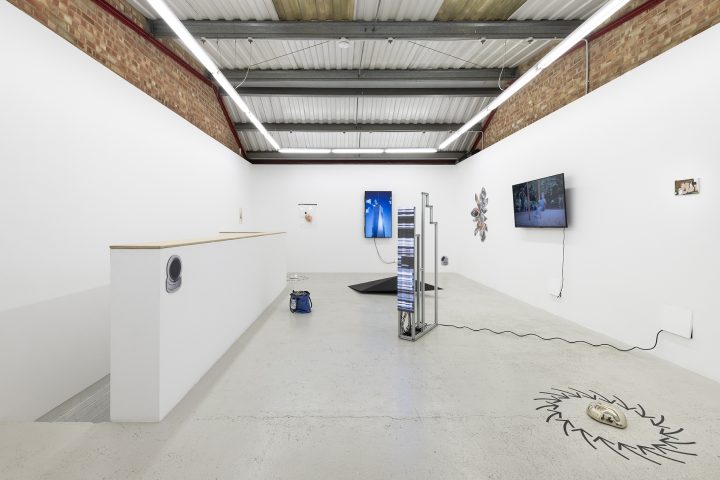
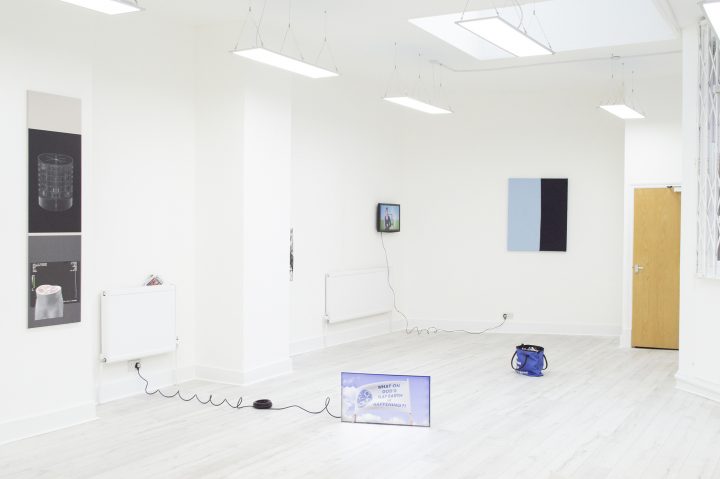
EA: How would you describe the collaborative dynamic between you and the artists you choose for the online residency? As an artist/curator, has there been a particular highpoint for you while specifically working on this section of the platform?
BBK: I wouldn’t necessarily call the online residency a collaboration between myself and the artists that I work with. In the relationship I am merely a facilitator, providing a platform for the artists who do almost a hundred percent of the work. That’s not to say I don’t enjoy working with the resident artists, seeing how their work develops over the month, but I like to make it clear that the residency is all about the artist and rarely about me and the platform. The highpoints are when I see artists, months or years after taking part in the residency, being in exhibitions and being selected for various things, in part because of their inclusion in the program. For me that’s the most important thing, providing artists with a space to show their work and to be seen by other artists and curators who will potentially provide them with opportunities in the future.
EA: As an online based project, are there specific challenges isthisit? faces in terms of funding and what are your strategies to overcome them?
BBK: For the time being the platform is solely funded by myself, with very little to no budget. I have tried various strategies in the past, setting up an online shop, beginning a Patreon, etc, but none have been very fruitful. I hope that in the future I can get Arts Council funding for the project, but for some time it’s not been the most feasible option. For several years I ran isthisit? whilst I was still at university, so I wasn’t able to apply for funding during that time. Since graduating I’ve had to have multiple jobs at a time to sustain myself living in London, whilst simultaneously trying to move forward in my artistic and curatorial endeavors, which has severely restricted my time and ability to apply for funding for the platform. I also run the project all by myself, so sometimes things take a lot longer than they would if I had a team behind me.
The platform relies heavily on the generosity of artists and their time, which I am ever thankful for. I have had curatorial opportunities given to me because of my work with isthisit?, and whenever that does occur and there’s money involved, I try to work with artists that have worked with me in the past.
“The highpoints are when I see artists, months or years after taking part in the residency, being in exhibitions and being selected for various things, in part because of their inclusion in the program. For me that’s the most important thing, providing artists with a space to show their work and to be seen by other artists and curators who will potentially provide them with opportunities in the future.”
EA: Can you highlight which you consider the most significant online based projects that are shaping the future of contemporary art?
BBK: There are lots of online projects out there that I admire, one of my favourite being New Scenario, run by Paul Barsch and Tilman Hornig, and their selection of offline/online projects. Their shows usually revolve around a selection of artworks being brought to an offline space, heavily documented and then posted online for visitors to explore. My favourite show of theirs is from 2017 and titled “HOPE”, where you explore a zombie infested university campus by navigating through a number of 360-degree panoramic scenes. I also really like Off Site Project and how they refuse to archive any of their online exhibitions, treating their shows like an offline gallery. If you miss a show you can’t experience it ever again. Daata Editions is a really important figurehead in the online space, commissioning artists to make exclusive artworks to be sold and viewed on their platform. I think money is what a lot of online projects lack, so Daata providing mostly digital artists with a source of income is incredibly significant.
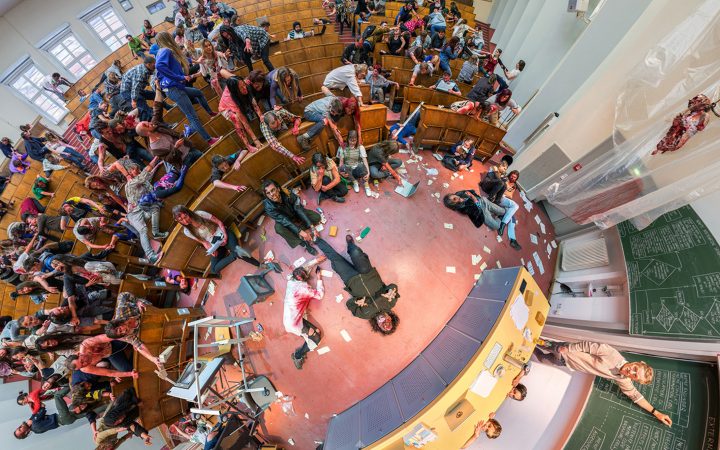
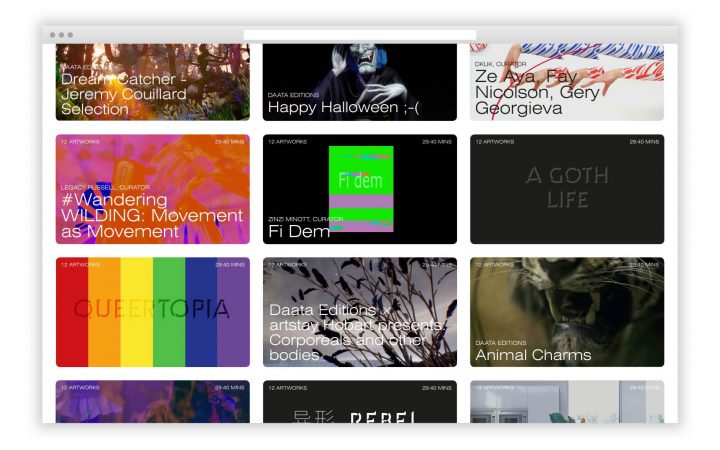
EA: During these days of lockdown and isolation we’ve seen more and more intervention of artists and art institutions online. How do you think the artistic practice will continue and evolve after this period of crisis?
BBK: I think everything is changing so quickly at the moment, it’s hard to keep track. When the virus started to shut down galleries and large art institutions in the UK in late February, at first people were optimistic, thinking that these cultural spaces would be reopening in May. I think it’s quickly dawning on everyone that this global crisis is going to continue for much longer than that, and the longer it continues the bigger effect it will have on how artists live and work. Even if spaces do open again, it will surely be under quite stringent rules and regulations, affecting what type of work will be shown and the size and scale of certain projects.
Right now lots of artists seem to be making work from within the confines of their home, probably making smaller works than they usually would, or being more focused on digital art, utilising processes still available over the internet to transform their digital works into physical objects. However, the more important thing to think about right now is how artists will actually survive this experience in the long term. Artists are currently losing a lot of money due to the loss of exhibitions, lack of freelance work and the overheads of paying their housing and studio rent. If this continues, which it will, many underrepresented and emerging artists won’t have enough money to survive, let alone think about how to evolve their art practice in this time of crisis.
“I think everything is changing so quickly at the moment, it’s hard to keep track. When the virus started to shut down galleries and large art institutions in the UK in late February, at first people were optimistic, thinking that these cultural spaces would be reopening in May. I think it’s quickly dawning on everyone that this global crisis is going to continue for much longer than that, and the longer it continues the bigger effect it will have on how artists live and work. Even if spaces do open again, it will surely be under quite stringent rules and regulations, affecting what type of work will be shown and the size and scale of certain projects.”
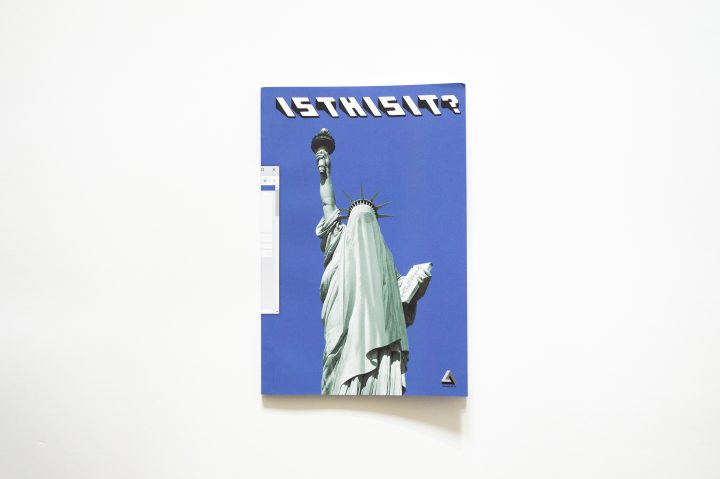
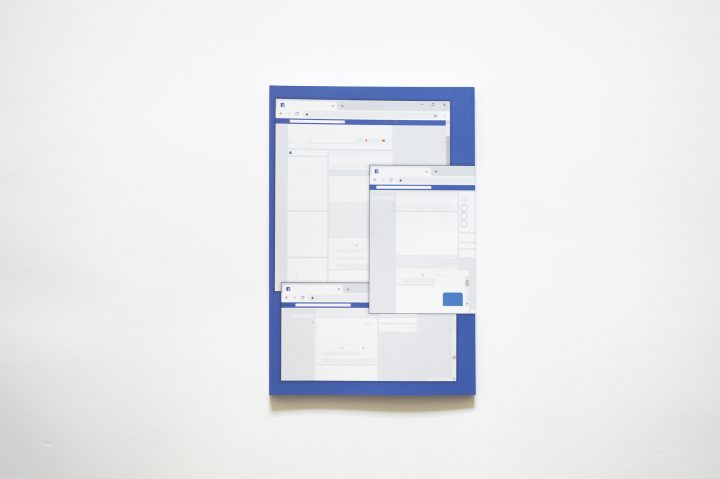
EA: How will this period influence the evolution of pre-existing online projects and the artistic practice of those who make the internet the basis of their own research?
BBK: Pre-existing projects seem to be getting more traffic than usual during this time, which is obviously to be expected, but I’m not sure whether or not that will have any lasting impact, partly because of how many online projects are being opened right now. Even if the already online spaces did it better, large galleries have a lot more money, time and people to dedicate to these digital experiences at the moment. Also, once this is all over, even if it does take at least a year or so before everything goes back to some semblance of normal, people will probably go back to not really taking online exhibitions or projects very seriously. As curators or organisers of online projects, I guess now is the time to give your all to these experiences, so that when we can go outside and see physical shows again, people will remember the online, and either return to it or invite you to be a part of offline things in the future.
It seems that artists who are already predominantly digital based are being asked to be a part of various things, be it interviews, online shows, etc, which is positive for them and their work, although the majority of it is unpaid and thus not helping them in a monetary way, which is the only way to really legitimately help people at the moment. As I said before, even though the online artist/platform is currently being heralded, physical experiences and artworks will go back to being superior soon enough.
“Pre-existing projects seem to be getting more traffic than usual during this time, which is obviously to be expected, but I’m not sure whether or not that will have any lasting impact, partly because of how many online projects are being opened right now. Even if the already online spaces did it better, large galleries have a lot more money, time and people to dedicate to these digital experiences at the moment.”
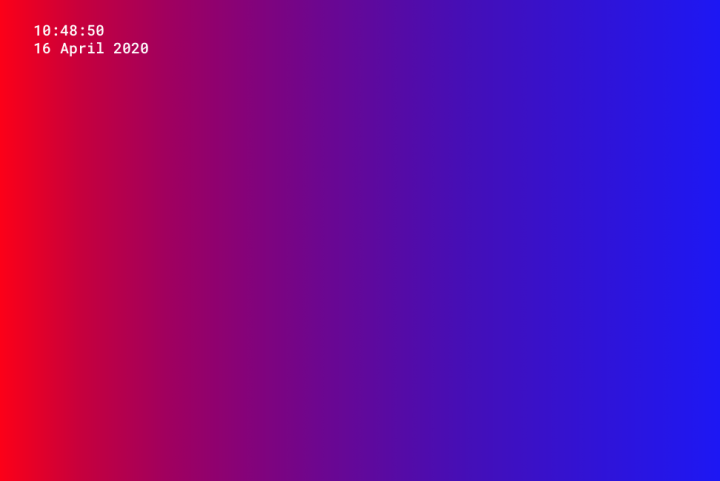
EA: How is it specifically influencing your artistic and curatorial research?
BBK: In terms of research, I already experience and view a lot of work online, and utilise the internet and books as the majority of my inspiration, although I would usually also go to lots of physical shows in a given week. It’s really hard to be invigorated and inspired at this present time though, as so many people are dying and will continue to die, alongside millions of people being jobless. It’s hard not to be constantly stressed and worried about non-art things at a time like this…
EA: What about the public? Will they perceive the art world and its imaginary from a different point of view?
BBK: I’ve seen lots of articles speaking about how important art is, and how this crisis is very overtly demonstrating that. I keep seeing so many art-based experiences being brought online, either for free or at an incredibly low cost. It’s great that we have access to cultural experiences at a time like this, and I’m sure people are watching or doing things that they wouldn’t usually do, either looking at art, watching an opera or playing a video game. All of this, though, is probably because people have a lot more time than they usually would, either because they’re working from home and don’t have to commute to their office or to these experiences in the physical world, or because they are literally jobless and there is nothing else to do, unable to get a new job due to all non-essential businesses being closed. So I think it’s great that these things are probably being accessed a lot more than they have been in the past, but I’m unsure whether this will translate into people going to exhibitions and spending more time on cultural experiences once the lockdowns are lifted.
“It’s great that we have access to cultural experiences at a time like this, and I’m sure people are watching or doing things that they wouldn’t usually do, either looking at art, watching an opera or playing a video game. All of this, though, is probably because people have a lot more time than they usually would… but I’m unsure whether this will translate into people going to exhibitions and spending more time on cultural experiences once the lockdowns are lifted.”
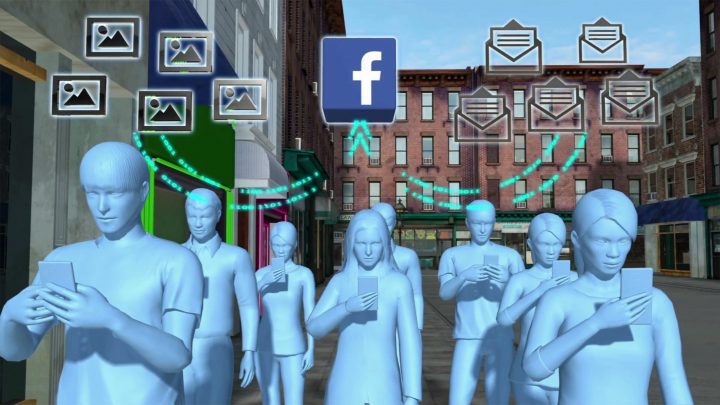
EA: What’s next? What do you see for the future of isthisit??
BBK: With the current coronavirus pandemic, either cancelling or postponing many of my current and future offline exhibitions, alongside loosing me my more monetary focused jobs, I’m not really sure to be honest. I’m currently in the midst of organising an offline exhibition about algorithmic bias, which will hopefully open in late June at [Senne] in Brussels, with the opening coinciding with Art Brussels. In my own artistic practice I also currently have a solo show on at Broadway Studio Gallery in Letchworth, a town near London, although this of course has been closed indefinitely.
In terms of the online parts of the platform, which will of course continue throughout this painful time, we have a show coming up that’s curated by collective çukurcuma, a curatorial collective based in Istanbul, San Francisco and London. We also have an upcoming online exhibition scheduled that’s being curated by Jack Smurthwaite, an independent curator based in London. And a number of ongoing open calls that anyone can apply to, including curating an online exhibition on the platform and being an online resident. There’s also an open call for our next physical book, all about digital love, which you can also apply to with your artwork and essays.
I’d like the project to continue to grow and evolve, hopefully in the future being able to pay the artists I work with, or get them paid in some way through various commercial endeavours, which I am occasionally able to do. Without the artists I work with there would be no online gallery, for me they’re the most important aspect of the entire process, and will continue to be long into the future.
Captions
1. Terms and Conditions May Apply at Annka Kultys Gallery, curated by Bob Bicknell-Knight. Installation View, 2018. Courtesy of isthisit? and Annka Kultys Gallery.
2. Trust Is The Ultimate Currency at Harlesden High Street, curated by Bob Bicknell-Knight. Installation View, 2019. Courtesy of isthisit?.
3 Paul Arraino, “Sensorial Divinities”, 2019, residency project at isthisit?. Courtesy of the artist and isthisit?.
4 Sophie Rogers, “NotJustAPrettyFace”, 2016. Courtesy of the artist and isthisit?.
5. “HOPE”, The Lecture Hall. Produced by New Scenario for HOPE. Courtesy of the artists and New Scenario. Photograph by Stefan Schrader.
6. Screenshot from daata.art. Courtesy of Daata Editions.
7. isthisit? issue 6. Front cover art: AES+F, New Liberty, 1996. Digital collage, c-print. Courtesy of the artists and isthisit?.
8. isthisit? issue 6. Back cover art: Benjamin Grosser, Safebook, 2018. Web browser plugin. Courtesy of the artists and isthisit?.
9. Conall McAtter, “Every Minute Counts”, residency project at isthisit?. Courtesy of the artist and isthisit?.
10. Bob Bicknell-Knight, “State of Affairs”, 2018 – 2019. Courtesy of the artist and Daata Editions.

 Español
Español